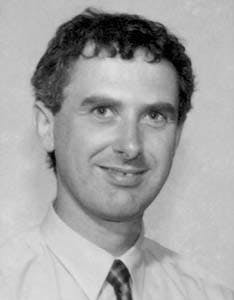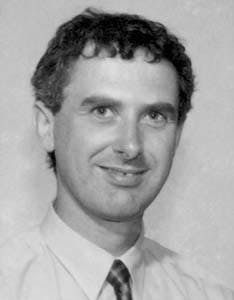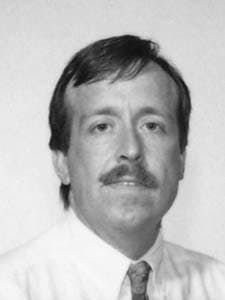Alan West
Graham Hutt
Stolt Comex Seaway Ltd.
Aberdeen
Robert StarsmoreSide-tap design parameters (10494 bytes)
Wintershall Noordzee B.V.
Den Helder, The Netherlands
In October 1994, a 16 in. welded branch was installed without interruption to production onto Wintershall Noordzee BVs 36-in. gas pipeline from the K13-A platform in the Dutch sector of the North Sea to Den Helder, The Netherlands.
The procedure is the first successfully to combine hyperbaric welding and subsea hot tapping without interruption to production.
Developers of new fields can now consider exporting product without interrupting existing production and through existing infrastructure even if no convenient tie-in locations exist.
Export options
This was exactly the case for Unocal Netherlands BV when the company planned to install an unmanned platform for production of natural gas in Block Q1 in the Dutch North Sea.
Unocal evaluated export options and established that the most attractive alternative was to export gas into the Wintershall 36-in. K13-A to Den Helder pipeline (Fig. 1)(81072 bytes).
Unocal approached Wintershall in February 1994 concerning the planned Q1 development. There was at this stage, however, no suitable connection point on the 36-in. pipeline.
Various options for installing a branch included the following:
- Flooding the pipeline and installing a conventional tee
- Stopping production and installing a welded branch followed by hot tapping
- Continuing production and installing a welded branch followed by hot tapping.
The chosen scheme was to retrofit a subsea side-tap assembly (Fig. 2)(62568 bytes). This was achieved by installation of a welded branch followed by hot tapping into the 36-in. pipeline.
Production in the pipeline was maintained at approximately 24 million standard cu m/day during the work.
Determining location
The following factors determined the location of the side tap on the 36-in. pipeline:
- Close proximity to Hoorn platform export point
- Avoidance of the north and south-bound shipping lanes
- Minimum depth of cover over the 36-in. pipeline (to minimize dredging)
- Avoidance of anode bracelets
- Defect-free section of pipe.
Conceptual design and engineering were carried out by Wintershall, The Hague, for the complete side tap including the ball-valve arrangement for the execution of the hot tap into the 36-in. pipe, the split-sleeve reinforcement, the associated spool pieces, support clamps, and protection structure.
These were all designed (where applicable) to comply with the Dutch Standard NEN 3650 and satisfied all authority requirements relevant to this type of installation. Design, fabrication, installation, and testing of all the pressure-retaining items were checked, witnessed, and certified by the Dutch certifying authority Stoomwezen.
Design parameters used for development of the side tap are shown in the accompanying box.
Materials chosen were typically equivalent to API 5LX 60. Detailed engineering was carried out by Mentor Project Engineering Ltd., Aberdeen, for the side tap and pipework; Dutch Engineering Consultant KCI, The Hague, for the protection structure; and installation engineering and design work by the installation contractor Stolt Comex Seaway Ltd., Aberdeen.
Short schedule
When the installation contract was awarded to Stolt Comex Seaway in July 1994, it allowed only 3 months preparation for a project.
Following are the main elements of the onshore preparation:
- Hyperbaric welding trials and qualifications for all weld configurations required for the side-tap installation
- Equipment preparation including extensive equipment modification
- Concrete weight coat removal trials
- Complete dry trials of the branch installation and hot tapping
- Personnel training
- Hydrotesting of branch connection.
Offshore elements consisted of the following:
- Mobilization of equipment aboard the DSV Seaway Harrier at the Stolt Comex Seaway base in Dundee
- Transit and set up on site
- Pipe location
- Uncovering of buried subsea pipe
- Removal of concrete weight coating and inspection of pipe
- Installation of habitat
- Welding operations to install tee and valve
- Pressure testing
- Recovery of habitat
- Installation of hot tapping equipment and cutting into the 36-in. pipeline
- Installation of pipework and testing
- Installation of protection structure
- Final survey of work.
Preparation onshore
Hyperbaric welding procedure qualifications and welder qualifications were crucial. Following are weld configurations (Fig. 3)(62106 bytes):
- A buttering layer onto the 36-in. pipe at the branch location
- A full-penetration branch weld between the 16-in. nipple and the buttering layer
- Longitudinal welds to join the two halves of the split sleeve (using a V groove and backing strip)
- Circumferential fillet weld at the top of the sleeve branch nipple
- A pipe-to-pipe horizontal butt weld to connect the valve to the branch nipple.
Stolt Comex Seaway, to achieve and maintain the required preheat, used a patented high-powered induction heating system developed during research and development by Stolt Comex Seaway for welding on live subsea pipelines.
The system is calibrated by use of a patented simulator system utilized during the welding trials. The induction-heating coils gave the welders some access difficulties, and an extensive training and practice program was undertaken as part of the preparation.
Fig. 4 (18106 bytes) shows a typical arrangement for the coils during the buttering.
Equipment preparation was mainly directed towards the habitat which was extensively modified. A top hat was installed to store the valve during deployment, and the resulting additional buoyancy required weight to be added.
A base frame used both for locating the habitat and supporting the hot-tapping equipment was also fabricated (Fig. 5)(69762 bytes).
It was necessary to remove concrete weight coating from the pipe joint. Removal of concrete can be very difficult and time consuming.
A sample of existing pipe with the same concrete weight coating was provided by Wintershall and used to carry out trials of the high-pressure water jetting system to cut slots along the concrete to allow it to be removed in sections.
The nozzles for the water jetting were mounted on tracks which meant that there was no retro jet required. Therefore, the full power of the high-pressure water was directed towards cutting (Fig. 6)(17214 bytes).
To train personnel, a program simulating the complete workscope inside the habitat was carried 2 weeks before mobilization. This training was made as realistic as possible and used, among other equipment, the induction-heating system, a spare split sleeve, and a spare valve (re-machined for contingency offshore).
All the welding personnel had to be familiar with and have practiced for each weld configuration; it was impractical to predetermine which personnel would carry out each activity.
The training also included simulation of the hot-tapping work, concrete removal, and inspection techniques.
The branch connection of the nipple to the pipe had to be pressure tested before hot tapping because the only way to test this connection once the hot tap was made was to put the complete pipeline at test pressure.
It is not, however, a simple matter of taking the branch up to pipeline test pressure before hot tapping; this would potentially damage the 36-in. pipe coupon and more importantly over stress the weld between the 36-in. pipe and the nipple.
The problem was resolved by carrying out a finite element (FE) analysis of the branch deflection and taking deflection measurements during shore testing to confirm the FE model.
Offshore work
The equipment and materials for the project were mobilized aboard the DSV Seaway Harrier in Dundee in October 1994 (Fig. 7)(13750 bytes). The ship then travelled directly to the worksite.
The pipeline was located with a TSS 340 pipetracker mounted in a seabed sledge. The approximate location was known from previous surveys.
Once the pipe was located, uncovering was carried out with an air lift. Initially, a 1-m length of pipe was cleared of concrete.
When the concrete was removed over the 1-m length, ovality checks and non-destructive testing were carried out.
The first location inspected was acceptable, demonstrating that the pipeline was in very good condition. During the preparation stage, engineering made allowances for as wide a range of acceptable tolerances as possible, ovality, wall thickness, and diameter, for example.
Once locating the branch was completed, further dredging exposed the required length of pipe for the work. Concrete was removed over the length the habitat would occupy, and the pipe was cleaned.
The habitat was then installed over the pipeline and ballast added.
The split sleeve, 16-in. nipple, and 16-in. valve were all inside the habitat (Fig. 5)(69762 bytes). The combination of putting the pipeline near the floor of the habitat and the Top Hat meant that all the welding work could be carried out without moving the habitat.
Work inside the habitat was carried out by welder divers wet transferring between the diving bells and habitat.
The training carried out before mobilization proved essential because of complicated metrology, pipe fitting, and heat-induced movements to be coped with at all stages of the installation. Accurate installation of all components is essential for the tapping process.
Corrosion coating was applied over the complete tee and uncoated pipeline before the habitat was removed.
Once the valve assembly was installed, the habitat was removed from the pipeline leaving a base frame in place. This was then used to install a platform from which the divers worked during hot tapping (Fig. 8)(77297 bytes).
Before hot tapping, a pressure test of the new branch was carried out based on the parameters determined during the shore trials.
The tapping commenced on completion of the pressure test utilizing a T.D. Williamson subsea hot-tapping machine. The tapping was carried out through the 16-in. ball valve. Once the tapping was completed, the valve was closed to isolate the pipeline from the seawater.
The cut coupon was recovered with the tapping machine.
The remainder of the work was conventional subsea spoolpiece and protection installation. The cover was placed over the side tap, and rock dumping was carried out within days of the departure of the DSV Seaway Harrier. n
High-pressure water jets cut slots in the pipelines concrete coating (Fig. 6).
Subsea covering for Den Helder pipeline tap is lifted for the journey to the work site offshore The Netherlands (Fig. 7).
The Authors
Copyright 1995 Oil & Gas Journal. All Rights Reserved.





